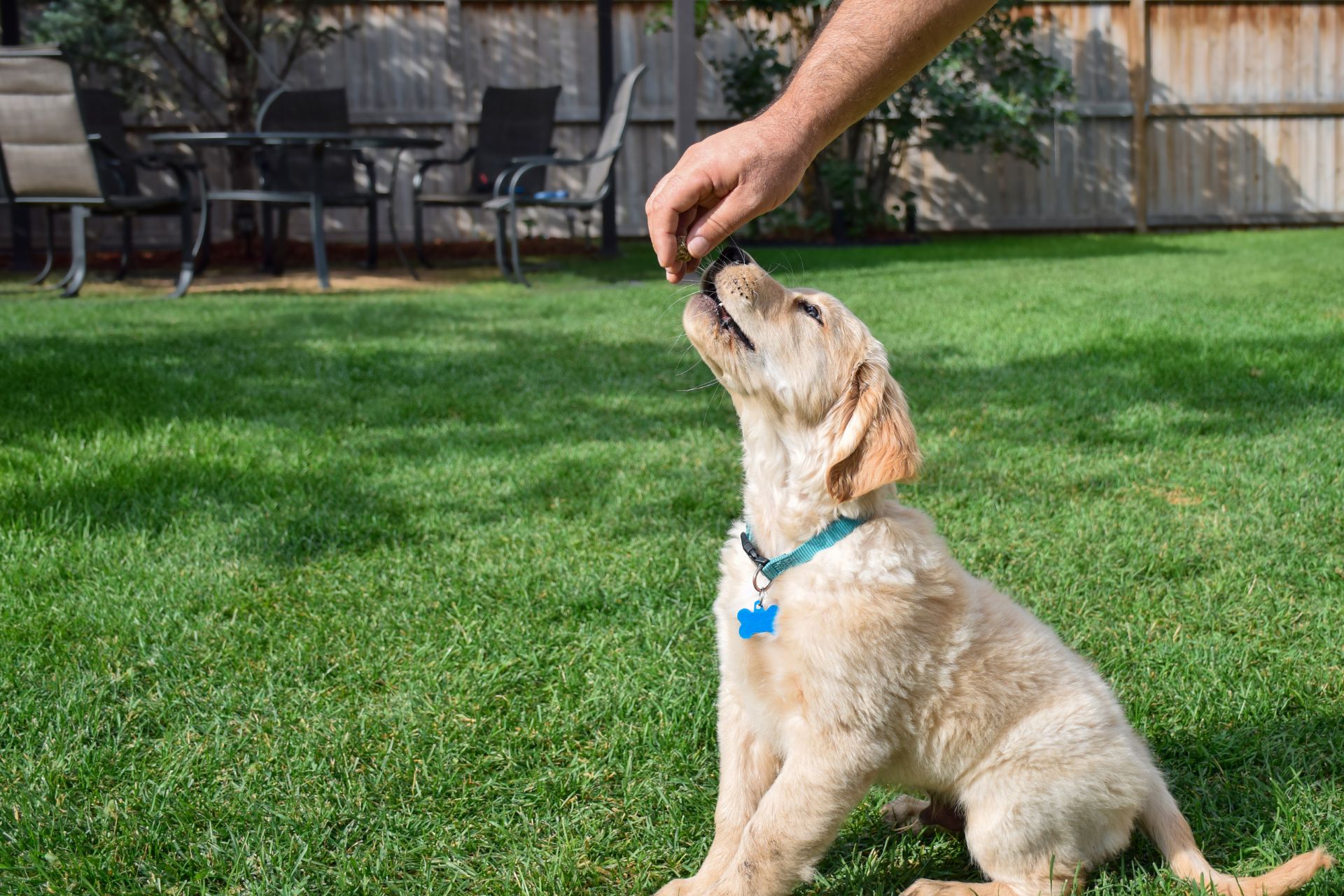As a new puppy parent, training your furry friend can be a daunting task. However, with the right commands and consistent training, you can turn your pup into a well-behaved and obedient companion. In this article, we’ll cover the 6 basic commands every puppy should learn and how to teach them effectively.
- Introduction
- The Importance of Puppy Training
- Command #1: Sit
- Command #2: Stay
- Command #3: Come
- Command #4: Down
- Command #5: Leave It
- Command #6: Heel
- Tips for Effective Puppy Training
- Common Puppy Training Mistakes to Avoid
- Conclusion
- FAQs
Introduction
Bringing home a new puppy can be an exciting experience (or a rollercoaster if you already have a cat), but it also comes with a lot of responsibility. One of the most important things you can do for your new furry friend is to provide them with proper training. Not only will this help you establish a bond with your pup, but it will also teach them good behavior and obedience.
In this article, we’ll go over the 6 basic commands that every puppy should learn, as well as tips for effective training and common mistakes to avoid.
The Importance of Puppy Training
Puppy training is an essential part of your dog’s development. Not only does it teach them basic commands and obedience, but it also helps establish a bond between you and your furry friend. Proper training and education can also prevent behavior problems such as aggression, barking, and chewing.
Command #1: Sit
The “sit” command is one of the most basic and essential commands for your pup to learn. Not only is it a great way to get your pup to stay still for grooming or medical procedures, but it also teaches them impulse control and good manners.
To teach your pup to sit, follow these steps:
- Hold a treat above your pup’s nose.
- Move the treat backwards towards their tail, causing their head to move up and their bottom to lower down.
- Once your pup is in a sitting position, give them the treat and praise them.
Repeat this process several times a day until your pup can sit on command without a treat.
Command #2: Stay
The “stay” command is another essential command for your pup to learn. It teaches them impulse control and patience, as well as ensuring their safety in situations such as crossing a busy road.
To teach your pup to stay, follow these steps:
- Ask your pup to sit.
- Hold your hand up in a “stop” motion.
- Step back and say “stay”.
- Wait a few seconds, then return to your pup and give them a treat and praise.
Repeat this process several times a day, gradually increasing the distance and duration of the stay.
Command #3: Come
The “come” command is one of the most important commands for your pup to learn. It can keep them safe in dangerous situations or help them find their way back to you if they become lost.
To teach your pup to come, follow these steps:
- Start by saying your pup’s name, followed by “come” in a happy and inviting tone.
- When your pup comes to you, reward them with a treat and praise.
Repeat this process several times a day, gradually increasing the distance between you and your pup.
Command #4: Down
The “down” command is another important command for your pup to learn. It teaches them impulse control and patience, as well as providing a way for them to calm down.
To teach your pup to lie down, follow these steps:
- Ask your pup to sit.
- Hold a treat in front of your pup’s nose and slowly lower it to the ground.
- As your pup follows the treat, say “down”.
- When your pup is lying down, give them the treat and praise.
Repeat this process several times a day until your pup can lie down on command without a treat.
Command #5: Leave It
The “leave it” command is important for keeping your pup safe, as it teaches them to leave things alone that could be harmful or dangerous.
To teach your pup to leave something alone, follow these steps:
- Hold a treat in your hand and show it to your pup.
- Close your hand around the treat and say “leave it”.
- Wait for your pup to lose interest in the treat and look away.
- Open your hand and give your pup a different treat as a reward.
Repeat this process several times a day with different objects until your pup can ignore things on command.
Command #6: Heel
The “heel” command teaches your pup to walk calmly and obediently by your side. It’s especially useful when walking in busy or crowded areas.
To teach your pup to heel, follow these steps:
- Start walking with your pup on a leash by your side.
- Say “heel” and start walking at a brisk pace.
- If your pup starts to pull or wander, stop and make them sit.
- Start walking again and repeat the process until your pup stays by your side.
Repeat this process several times a day, gradually increasing the duration of the walk.
Tips for Effective Puppy Training
- Keep training sessions short and frequent – about 5-10 minutes per session, several times a day.
- Use positive reinforcement – reward good behavior with treats and praise.
- Be patient and consistent – training takes time and repetition.
- Keep training sessions fun and engaging – use toys and playtime as rewards.
- Avoid punishment or negative reinforcement – this can harm your pup’s development and relationship with you.
Common Puppy Training Mistakes to Avoid
- Inconsistency – using different commands or techniques can confuse your pup.
- Punishment or negative reinforcement – this can cause fear or aggression in your pup.
- Skipping basic commands – skipping essential commands can lead to behavior problems later on.
- Not socializing your pup – socialization is key to your pup’s development and behavior.
Conclusion
Training your puppy is an essential part of being a responsible pet owner. By teaching your pup the 6 basic commands outlined in this article, you’ll not only establish a bond with your furry friend but also ensure their safety and good behavior. Remember to keep training sessions short and positive, and to avoid common training mistakes such as punishment or inconsistency.
FAQs
- When should I start training my puppy?
- You can start training your puppy as soon as you bring them home, usually around 8-10 weeks old.
- Can an older dog still learn new commands?
- Yes, dogs of all ages can learn new commands through consistent training and positive reinforcement.
- How long does it take to train a puppy?
- Training a puppy takes time and repetition, and can take anywhere from several weeks to several months.
- What should I do if my pup doesn’t respond to a command?
- Be patient and consistent, and consider breaking down the command into smaller steps. Seek the help of a professional trainer if necessary.
- Should I use a collar or harness for training?
- Both collars and harnesses can be effective for training











